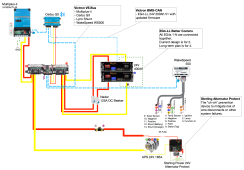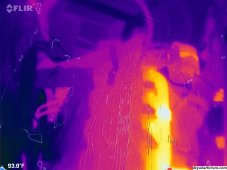VanLuna
New Member
- Joined
- Aug 4, 2021
- Messages
- 21
Has anyone used a WakeSpeed with the version 1 EG4-LLs?
--- answer --
April 2023: I want to provide an answer to the original question up front to save future readers from reading all this.
No. The V1 will not work with Victron without a V2 as the master (battery ID 1) in the system.
More details and discussion about V2s below ....
----- original post ----
I want to confirm you have the v1 working with the CAN input on the WakeSpeed.
I'm having a chat with the kind folks at American Power (alternator) about adding a 24v Alternator to my Ford Transit 350 EcoBoost and this concern was expressed:
"Will again emphasize the need for not just CAN but the ability of the BMS to communicate outbound so to be able to have the alternator disconnect prior to an emergency cutoff of charge should it occur. Without that ability you will have a large voltage spike occur when the alternator would lose the 24V battery sense and try to recreate it in a flash. The large voltage spike will likely take out the alternator and/or regulator that would not be covered by warranty."
So if someone is already doing this, that would be good to know.
Thanks!
--- answer --
April 2023: I want to provide an answer to the original question up front to save future readers from reading all this.
No. The V1 will not work with Victron without a V2 as the master (battery ID 1) in the system.
More details and discussion about V2s below ....
----- original post ----
I want to confirm you have the v1 working with the CAN input on the WakeSpeed.
I'm having a chat with the kind folks at American Power (alternator) about adding a 24v Alternator to my Ford Transit 350 EcoBoost and this concern was expressed:
"Will again emphasize the need for not just CAN but the ability of the BMS to communicate outbound so to be able to have the alternator disconnect prior to an emergency cutoff of charge should it occur. Without that ability you will have a large voltage spike occur when the alternator would lose the 24V battery sense and try to recreate it in a flash. The large voltage spike will likely take out the alternator and/or regulator that would not be covered by warranty."
So if someone is already doing this, that would be good to know.
Thanks!
Last edited:




